Home>Articles>What Do Tripped Circuit Breakers And Blown Fuses Indicate
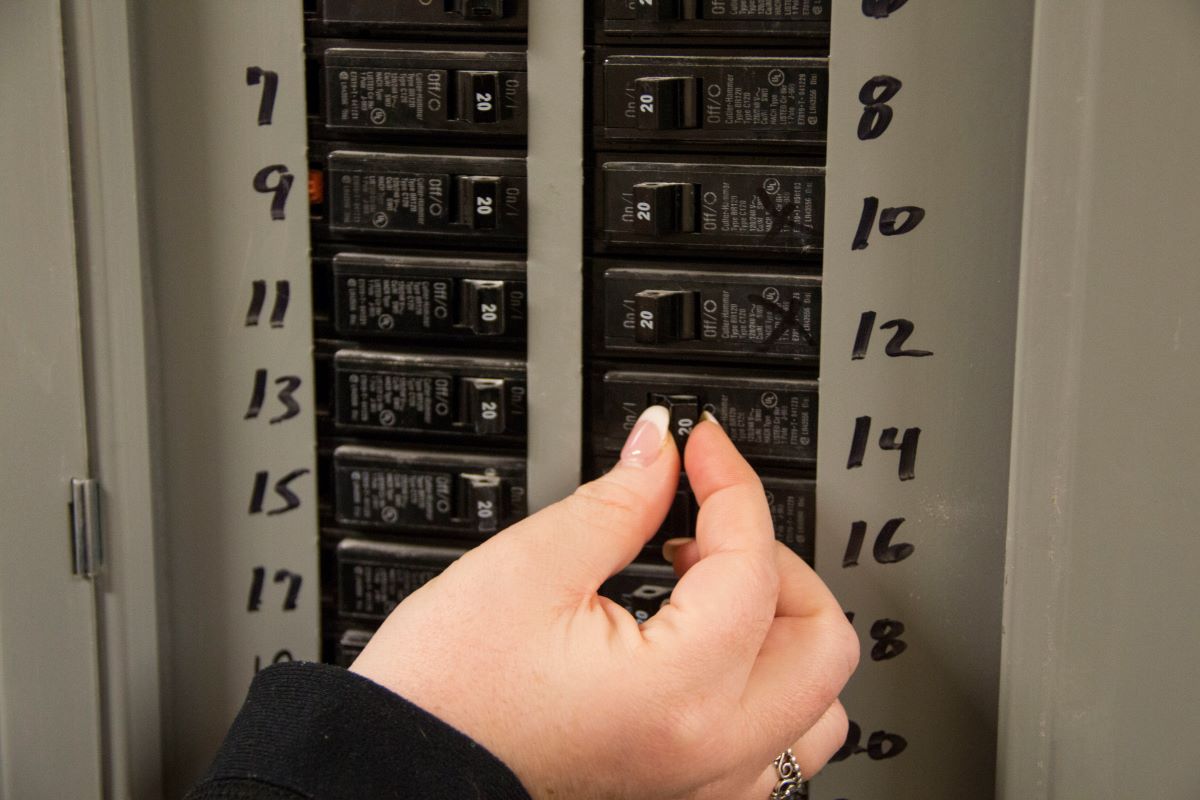

Articles
What Do Tripped Circuit Breakers And Blown Fuses Indicate
Modified: January 5, 2024
Tripped circuit breakers and blown fuses indicate electrical problems. Learn more about these issues and how to address them in our informative articles.
(Many of the links in this article redirect to a specific reviewed product. Your purchase of these products through affiliate links helps to generate commission for Storables.com, at no extra cost. Learn more)
Introduction
Have you ever experienced a sudden loss of power in your home or workplace? Chances are it was due to a tripped circuit breaker or a blown fuse. These electrical issues can be frustrating and inconvenient, but they serve an important purpose in protecting your electrical system from overloads and potential fire hazards.
In this article, we will explore what tripped circuit breakers and blown fuses indicate, how they work, and how to address these issues. Understanding these electrical components will empower you to troubleshoot and resolve common electrical problems, ensuring the safety and functionality of your electrical system.
So let’s dive in and unravel the mysteries of tripped circuit breakers and blown fuses!
Key Takeaways:
- Tripped circuit breakers and blown fuses are crucial safety mechanisms protecting electrical systems. Preventive measures such as load distribution and regular maintenance can minimize these issues, ensuring a safe and reliable power supply.
- Understanding the causes and signs of tripped circuit breakers and blown fuses empowers individuals to troubleshoot and address electrical issues effectively, maintaining a safe and uninterrupted power supply.
Read more: Why Do Arc Fault Breakers Trip
Tripped Circuit Breakers
Circuit breakers are essential safety devices designed to protect your electrical circuits from overloads, short circuits, and electrical faults. They are commonly found in residential and commercial electrical panels.
An overloaded circuit, where the electrical load exceeds the circuit’s capacity, can cause the circuit breaker to trip. This is a safety mechanism that cuts off the power to prevent damage to the wiring and appliances, as well as to reduce the risk of electrical fires.
When a circuit breaker detects an overload or another electrical fault, it automatically shuts off the flow of electricity. This interruption is indicated by the switch on the breaker panel flipping to the “off” position or a red flag popping up.
Common causes of tripped circuit breakers include:
- Overloaded circuits: Plugging too many appliances or devices into a single circuit can overload it and cause the breaker to trip.
- Short circuits: This occurs when a hot wire comes into contact with a neutral wire or a ground wire, causing a sudden surge of electrical current and tripping the breaker.
- Ground faults: Ground faults happen when a hot wire comes into contact with a grounded surface or object, resulting in a circuit overload.
- Aging or faulty appliances: Appliances that are old or malfunctioning can draw excessive current, leading to circuit overloads and breaker trips.
You can identify a tripped circuit breaker by inspecting your electrical panel. Look for switches that are in the “off” position or have a red flag popped up. It’s important not to ignore a tripped breaker and attempt to reset it without addressing the underlying cause. Simply resetting the breaker without resolving the issue could result in a repeated trip or even pose a safety hazard.
To reset a tripped circuit breaker, follow these steps:
- Locate the tripped breaker in your electrical panel.
- Flip the switch to the “off” position.
- Identify the cause of the trip, such as an overloaded circuit or a faulty appliance.
- Address the issue, such as unplugging unnecessary devices or repairing/replacing faulty appliances.
- Once the problem is resolved, flip the breaker switch back to the “on” position.
It’s important to note that if a breaker continues to trip frequently or if you are unsure about the cause of the trip, it is recommended to consult with a qualified electrician. They will be able to diagnose the issue and provide appropriate solutions.
To prevent circuit breaker tripping, consider the following measures:
- Avoid overloading circuits by distributing electrical loads evenly across multiple circuits.
- Regularly inspect and maintain your electrical system to identify any potential issues or faulty appliances.
- Use surge protectors to protect sensitive electronic devices.
- Consider investing in energy-efficient appliances that require less power.
By understanding the causes, signs, and preventive measures for tripped circuit breakers, you can effectively manage electrical issues and ensure the safety and efficiency of your electrical system.
Overview of Circuit Breakers
Circuit breakers are essential components of an electrical system. They are designed to protect electrical circuits and equipment from damage caused by overloads, short circuits, and electrical faults. In the event of an abnormal electrical condition, circuit breakers automatically interrupt the flow of electricity, preventing potential hazards.
A circuit breaker consists of several components:
- Switch: This is the part of the breaker that allows you to manually control the flow of electricity. In the “on” position, the switch allows current to flow through the circuit. In the event of a fault or overload, the switch automatically opens, cutting off the electrical supply.
- Tripping Mechanism: The tripping mechanism is responsible for sensing abnormal electrical conditions and activating the switch to interrupt the circuit. It can detect overloads, short circuits, and ground faults.
- Contacts: The contacts of a circuit breaker are responsible for conducting electricity under normal operating conditions. When the circuit breaker trips, the contacts separate, creating an open circuit.
- Arc Extinction System: When the contacts of a circuit breaker separate, an arc of electricity may form. The arc extinction system is designed to extinguish this arc quickly and safely.
Circuit breakers are available in different types and sizes to accommodate various electrical systems and loads. Some common types include:
- Standard Circuit Breakers: These are the most common type of circuit breakers found in residential and commercial buildings. They come in various current ratings to match the specific electrical requirements of different circuits.
- GFCI Circuit Breakers: Ground Fault Circuit Interrupter (GFCI) breakers are designed to protect against ground faults. They are commonly used in bathrooms, kitchens, and outdoor areas where moisture is present.
- AFCI Circuit Breakers: Arc Fault Circuit Interrupter (AFCI) breakers are designed to protect against arc faults, which can cause electrical fires. They are commonly used in bedrooms, living rooms, and other areas where electrical wiring is hidden behind walls.
- Main Circuit Breakers: Main circuit breakers are responsible for controlling the entire electrical supply to a building. They are typically located in the main electrical panel.
It’s important to note that circuit breakers have a specific amperage rating, which indicates the maximum amount of current they can handle. This rating should not be exceeded to prevent overloads and potential damage.
When selecting or replacing circuit breakers, it’s crucial to consult the electrical code requirements and consider the specific needs of your electrical system. If you are unsure, it is recommended to seek the assistance of a qualified electrician.
In summary, circuit breakers serve as critical protection devices within an electrical system. They safeguard against overloads, short circuits, and electrical faults by interrupting the flow of electricity when abnormal conditions are detected. Understanding the different types, components, and ratings of circuit breakers can help you maintain a safe and efficient electrical system.
Causes of Tripped Circuit Breakers
Tripped circuit breakers can occur due to various reasons, ranging from ordinary everyday activities to underlying electrical issues. Understanding the common causes of tripped circuit breakers can help you identify and address the problem effectively. Here are some of the most common causes:
- Overloaded Circuits: One of the primary causes of a tripped circuit breaker is an overloaded circuit. When you attempt to draw more electrical current through a circuit than it’s designed to handle, the circuit breaker trips to protect the wiring and appliances from overheating. Overloading can occur when you plug too many devices or appliances into a single circuit or when high-powered devices such as air conditioners or space heaters are used simultaneously on the same circuit.
- Short Circuits: A short circuit is another common cause of a tripped circuit breaker. It happens when a hot wire comes into contact with a neutral wire or a ground wire. This causes a sudden surge of electrical current, which the circuit breaker detects and reacts to by tripping. Short circuits can occur due to damaged or frayed wiring, loose connections, faulty switches or outlets, or pests chewing on electrical wires.
- Ground Faults: Ground faults occur when a hot wire comes into contact with a grounded surface or object. Similar to short circuits, ground faults cause a sudden surge of electrical current, leading to a tripped circuit breaker. Ground faults can be caused by faulty appliances, damaged or degraded wiring, water leakage, or moisture in electrical outlets or devices.
- Faulty Appliances: Aging or malfunctioning appliances can also be a source of tripped circuit breakers. When an appliance develops a fault or experiences a power surge, it can draw excessive current, causing the circuit breaker to trip. Faulty appliances can include refrigerators, air conditioners, washing machines, space heaters, and other electrical devices.
- Circuit Overloads: In some cases, a circuit may be consistently overloaded due to inadequate wiring or an insufficient number of circuits in the electrical system. Continuous overloading of a circuit can cause frequent trips as the breaker attempts to protect the system. This issue may require the services of a licensed electrician to assess and upgrade the electrical system.
When a circuit breaker trips, it’s essential to identify the underlying cause before attempting to reset it. This involves inspecting the affected circuit, unplugging devices, checking for damaged wiring or connections, and ensuring that appliances are in working order.
It’s important to note that some circuit breakers may trip due to occasional events, such as power surges or lightning strikes. However, if a circuit breaker frequently trips without any obvious cause, it is crucial to consult with a qualified electrician to determine the root cause and address any potential electrical issues.
By being aware of the common causes of tripped circuit breakers, you can take proactive measures to prevent overloads, address faulty appliances, ensure proper electrical wiring, and maintain a safe and functioning electrical system in your home or workplace.
Common Signs of a Tripped Circuit Breaker
A tripped circuit breaker can disrupt the flow of electricity to specific circuits in your home or workplace. It’s important to recognize the signs of a tripped circuit breaker, as they can indicate electrical issues that need to be addressed. Here are some common signs to look out for:
- Loss of Power: One of the most obvious signs of a tripped circuit breaker is a sudden loss of power to certain areas or appliances. If a circuit breaker trips, it cuts off the electrical supply to the corresponding circuit, causing lights to go off, appliances to shut down, and outlets to become non-functional. If you notice areas or devices without power while others remain unaffected, it is likely that a circuit breaker has tripped.
- Tripped Breaker Switch: When a circuit breaker trips, the switch on the electrical panel will typically flip to the “off” position. You can visually inspect your electrical panel to check if any breakers have been tripped. Additionally, some circuit breakers may have a red flag or indicator that pops up when the breaker trips, making it easy to identify the tripped breaker at a glance.
- Flickering Lights: A tripped circuit breaker can cause lights to flicker or dim. This can occur when the electrical load on the circuit becomes too high, causing the breaker to trip and momentarily interrupt the power supply. If you notice consistent or recurring light flickering, it may indicate an underlying issue that needs to be addressed.
- Burning Smell or Unusual Sounds: In some cases, a tripped circuit breaker may be accompanied by a burning smell or unusual sounds. These can be signs of a more serious electrical problem, such as faulty wiring or a malfunctioning appliance that has caused the breaker to trip. If you notice any strange smells or sounds, it’s important to shut off the power to the circuit and seek professional assistance immediately.
- Repeated Tripping: If a particular circuit breaker frequently trips, even after being reset, it may indicate an ongoing electrical issue. Repeated tripping could be a sign of an overloaded circuit, faulty wiring, or a defective appliance. If you experience frequent trips or are unable to identify the cause of the tripping, it is recommended to consult with a qualified electrician for further evaluation and troubleshooting.
When you encounter any of these signs, it’s important not to ignore or dismiss them. Tripped circuit breakers are safety mechanisms designed to protect your electrical system from damage and potential hazards. Resetting the breaker without addressing the underlying cause may result in a repeated trip or pose a risk to your safety.
If you experience a tripped circuit breaker, follow the appropriate steps to address the issue, including identifying the cause of the trip, addressing any overloaded circuits or faulty appliances, and ensuring that your electrical system is in good working order. If in doubt, it’s always best to consult with a professional electrician who can diagnose the problem and provide the necessary solutions.
By recognizing and responding to the signs of a tripped circuit breaker, you can maintain a safe, efficient, and reliable electrical system in your home or workplace.
Read more: Why Breakers Trip
How to Reset a Tripped Circuit Breaker
Resetting a tripped circuit breaker is a simple process that can be done safely with a few basic steps. Before attempting to reset the breaker, it’s important to identify and address the cause of the trip to avoid a repeated occurrence. Here’s a guide on how to reset a tripped circuit breaker:
- Locate the Electrical Panel: The electrical panel, also known as the breaker box or fuse box, is usually situated in a basement, utility room, or garage. It houses the circuit breakers or fuses that control the electrical circuits in your home or workplace.
- Identify the Tripped Breaker: Inspect the breaker panel and look for any switches that are in the “off” position or have a red flag popped up. These indicate the tripped circuit breakers. Note the position or label of the tripped breaker for easy reference.
- Switch Off the Tripped Breaker: To reset the tripped breaker, you need to start by switching it to the “off” position. This involves flipping the switch all the way to the opposite side of the “on” position. This ensures that the breaker is fully reset before re-engaging it.
- Identify and Address the Cause: Before resetting the breaker, it’s crucial to determine the cause of the trip. Check for any overloaded circuits by unplugging unnecessary devices or appliances from the affected circuit. Inspect for any visible wiring damage, loose connections, or faulty appliances that may have caused the trip. Address these issues before proceeding.
- Reset the Breaker: Once the cause of the trip has been addressed, you can proceed to reset the breaker. To do this, simply flip the switch back to the “on” position. You should feel or hear a click as the breaker engages. Ensure that the switch is fully in the “on” position.
- Test the Circuit: After resetting the breaker, test the circuit to ensure that power has been restored. This can be done by turning on the lights or plugging in a device that was previously affected by the tripped breaker. If the power is restored and the breaker holds without tripping again, you have successfully reset the circuit breaker.
It’s important to note that if the circuit breaker trips again immediately after resetting, there may be an ongoing issue that requires further investigation by a qualified electrician. Additionally, it’s recommended to consult with an electrician if you are uncertain about the cause of the trip, encounter repeated trips, or experience any unusual smells, sounds, or signs of electrical problems.
Remember, safety is paramount when dealing with electricity. If you are uncomfortable or unsure about dealing with circuit breakers, it’s always best to seek professional assistance from a licensed electrician.
By following these steps and addressing the underlying cause of the trip, you can safely and effectively reset tripped circuit breakers, restoring power and maintaining the functionality of your electrical system.
Preventive Measures for Circuit Breaker Tripping
Circuit breaker tripping can be a frustrating and inconvenient issue. Fortunately, there are several preventive measures you can take to minimize the occurrence of tripped circuit breakers and maintain a stable electrical system. By following these measures, you can ensure the safety and efficiency of your electrical circuits. Here are some preventive measures to consider:
- Distribute Electrical Loads: Avoid overloading circuits by distributing electrical loads evenly across multiple circuits. Be mindful of the wattage ratings of your devices and appliances, and avoid plugging too many high-powered devices into a single circuit. If you frequently experience circuit overloads, consider hiring a licensed electrician to assess your electrical system and make necessary modifications.
- Unplug Unnecessary Devices: Unplug devices or appliances that are not in use to reduce the electrical load on circuits. Even when not turned on, certain devices such as chargers or power adapters can still draw some power when plugged in, contributing to an increased load on the circuit.
- Maintain Appliances and Wiring: Regularly inspect and maintain your appliances and electrical wiring. Faulty appliances or damaged wiring can lead to overloads or short circuits, resulting in circuit breaker trips. Replace frayed or damaged cords, tighten loose connections, and address any signs of electrical problems promptly.
- Use Surge Protectors: Consider using surge protectors for sensitive electronic devices such as computers, televisions, and home entertainment systems. Surge protectors help safeguard these devices from power surges and voltage spikes, reducing the risk of circuit overloads and potential damage.
- Upgrade to Energy-Efficient Appliances: Energy-efficient appliances consume less power, which can help alleviate the strain on your electrical circuits. When purchasing new appliances, opt for models with Energy Star ratings or high energy efficiency ratings to reduce electricity consumption and minimize the chances of circuit breaker tripping.
- Separate Major Appliances: High-powered appliances such as refrigerators, air conditioners, and washing machines can draw a significant amount of current. To prevent overloading circuits, consider dedicating separate circuits for these appliances. Consulting with an electrician to install dedicated circuits can help ensure that these appliances receive the power they need without affecting other circuits.
In addition to these preventive measures, it’s also important to be vigilant for any signs of electrical issues such as flickering lights, buzzing sounds, burning smells, or frequent breaker trips. If you notice any of these signs, consult with a qualified electrician to identify and address the underlying problem.
Remember, while preventive measures can minimize the occurrence of circuit breaker tripping, it’s crucial to prioritize your safety. If you are unsure about the electrical system or need assistance with modifications or repairs, always consult with a licensed electrician to ensure the work is done properly and safely.
By implementing these preventive measures and staying proactive with your electrical system, you can reduce the occurrence of circuit breaker tripping and maintain a reliable and safe electrical system in your home or workplace.
Tripped circuit breakers and blown fuses indicate an overloaded circuit or a short circuit. To fix the issue, unplug devices on the circuit, reset the breaker, and replace the fuse. If the problem persists, consult a professional electrician.
Blown Fuses
Blown fuses are another common electrical issue that can disrupt the flow of electricity in your home or workplace. Fuses play a similar role to circuit breakers by protecting electrical circuits from overloads, but they operate in a slightly different way. Understanding blown fuses, how they work, and how to address them is essential for maintaining a safe and efficient electrical system.
A fuse is a small, cylindrical device designed to protect electrical circuits from excessive electrical currents. It consists of a metal filament enclosed in a heat-resistant housing. When a circuit experiences an overload or short circuit, the excessive electrical current passing through the fuse causes the filament to heat up. Once the temperature exceeds the fuse’s rated threshold, the filament melts and opens the circuit, disrupting the flow of electricity and preventing damage to the wiring and appliances.
Blown fuses are indicated by a visible break in the filament or a charred appearance inside the fuse housing. When a fuse blows, power is cut off to the affected circuit, resulting in the loss of functionality for devices or appliances connected to that circuit. To restore power, the blown fuse must be replaced with a new one of the same rating.
Understanding the common causes of blown fuses is essential for troubleshooting and preventing this issue. Some common causes include:
- Overloaded Circuits: Overloading a circuit by plugging in too many devices or appliances can cause the fuse to blow. Exceeding the circuit’s ampacity rating leads to excessive current flow and overheating, resulting in a blown fuse.
- Short Circuits: A short circuit occurs when a hot wire comes into direct contact with a neutral wire or ground wire. This causes a sudden surge of electrical current, resulting in a blown fuse. Short circuits can be caused by damaged or frayed wiring, loose connections, or pests chewing on electrical wires.
- Faulty Appliances or Devices: Aging or malfunctioning appliances or devices can draw excessive current, leading to a blown fuse. Faulty wiring within the device or a sudden power surge can also cause the fuse to blow.
- Circuit Overloads: If a particular circuit is consistently overloaded due to inadequate wiring or insufficient circuits, it can lead to repeated blown fuses. This issue might require the assistance of a licensed electrician to assess and upgrade the electrical system.
When you encounter a blown fuse, follow these steps to address the issue:
- Locate the Electrical Panel: Identify the location of the electrical panel or fuse box in your home or workplace. Most electrical panels are situated in basements, utility rooms, or garages.
- Identify the Blown Fuse: Inspect the fuses in the electrical panel to identify the blown fuse. Look for any fuses with a visible break in the filament or a charred appearance inside the fuse housing.
- Switch Off Power to the Blown Circuit: Before replacing the blown fuse, switch off the power to the affected circuit. This ensures your safety while handling the fuse and reduces the risk of electrical shock.
- Replace the Blown Fuse: Remove the blown fuse from its socket and replace it with a new fuse of the same rating. Make sure to select a fuse with the correct amperage to match the circuit’s requirements. Gently insert the new fuse into the socket until it is securely in place.
- Switch Power On: Once the new fuse is in place, switch the power back on to the circuit. Test the circuit to ensure that power has been restored and that the fuse does not blow again.
It’s important to note that if the fuse blows again immediately after replacement, there may be an underlying problem that requires further investigation by a qualified electrician. In such cases, professional assistance is recommended to identify and address the root cause of the blown fuses.
By understanding blown fuses, their causes, and the steps to address them, you can effectively troubleshoot electrical issues and maintain a safe and reliable electrical system in your home or workplace.
Understanding Fuses
Fuses are essential components of an electrical system that protect circuits from excessive electrical current. Understanding how fuses work and their role in electrical safety is crucial for effectively troubleshooting electrical issues and maintaining a safe environment.
A fuse is a small, cylindrical device made of metal and enclosed in a heat-resistant housing, typically made of glass or ceramic. It is designed to break the electrical circuit in the event of an overload or short circuit, preventing damage to the wiring and appliances. Fuses consist of the following key elements:
- Fuse Element: The central element of a fuse is a metal conductor, typically made of copper or an alloy with a low melting point. This element connects the two ends of the fuse, creating a path for the electrical current to flow through.
- Housing: The fuse element is enclosed within a housing made of glass or ceramic. This housing provides protection against external factors and contains any sparks or melting that may occur when the fuse blows.
- Rating: Each fuse has a specific current rating, measured in amperes (A), which indicates the maximum amount of current it can safely carry. Fuses are typically labeled with their current rating to ensure proper selection and replacement.
When an electrical circuit experiences an overload or short circuit, the current passing through the fuse exceeds its rated capacity. This causes the fuse element to heat up rapidly. Once the heat surpasses the melting point of the fuse element, it quickly melts and breaks the circuit. This interruption prevents further flow of electrical current, protecting the circuit and connected devices from damage or hazards.
Blown fuses are indicated by a visible break in the fuse element or a charred appearance within the housing. When a fuse blows, it needs to be replaced with a new fuse of the same rating to restore functionality and ensure electrical safety.
Fuses play a significant role in protecting electrical systems, but they have limitations and considerations. Here are some important points to keep in mind:
- One-Time Use: Fuses are designed to be one-time use devices. Once a fuse blows, it needs to be replaced with a new one. Unlike circuit breakers, which can be reset, fuses must be physically replaced.
- Correct Rating: It is crucial to select fuses with the correct rating for the specific circuit. Using a fuse with a higher rating than required can jeopardize the safety of the electrical system, while using a fuse with a lower rating may result in frequent fuse blows or insufficient protection.
- Proactive Replacement: It’s important to periodically inspect fuses in the electrical panel and replace any that show signs of damage or aging. Regular maintenance helps ensure that fuses are in good working condition and provide optimal protection.
- Professional Assistance: If you are unsure about fuse ratings, replacements, or the cause of blown fuses, it is recommended to seek the assistance of a qualified electrician. They can provide guidance, perform necessary repairs, and ensure that the electrical system is safe and compliant with codes and regulations.
Understanding fuses and their function within an electrical system empowers you to identify blown fuses, replace them safely, and maintain a reliable and secure electrical infrastructure in your home or workplace.
Read more: What Are Fuses And Circuit Breakers Used For
Causes of Blown Fuses
Blown fuses can occur as a result of various factors, ranging from electrical overloads to wiring issues. Understanding the common causes of blown fuses can help you troubleshoot and address electrical problems effectively. Here are some of the most common causes:
- Overloaded Circuits: One of the primary causes of blown fuses is an overloaded circuit. Overloading occurs when the electrical load exceeds the fuse’s or circuit’s capacity. This can happen when too many devices or appliances are connected to a single circuit or when high-powered devices draw excessive electrical current simultaneously.
- Short Circuits: A short circuit is another common cause of blown fuses. It occurs when a hot wire comes into direct contact with a neutral wire or a ground wire. This causes a sudden surge of electrical current, resulting in a blown fuse. Short circuits are often caused by damaged or frayed wiring, loose connections, or faulty appliances.
- Faulty Appliances or Devices: Aging or malfunctioning appliances or devices can cause blown fuses. Faulty electrical components within these devices can lead to abnormal electrical currents, overheating, and eventually blown fuses.
- Ground Faults: Ground faults occur when a hot wire comes into contact with a grounded surface or object. This can cause an excessive electrical current, leading to a blown fuse. Ground faults can result from damaged wiring, moisture intrusion, or faulty appliances.
- Wiring Issues: Poorly installed or aging wiring can also be a source of blown fuses. Faulty wiring can cause electrical resistance, leading to increased heat and potentially blown fuses. Additionally, incorrect wiring connections or inadequate wire gauge can contribute to fuse failures.
- Power Surges: Sudden power surges, often caused by lightning strikes or utility grid issues, can overwhelm circuits and result in blown fuses. Power surges can cause a spike in electrical voltage, exceeding the capacity of the fuses and leading to their failure.
When a fuse blows, it is crucial to identify and address the underlying cause to prevent repeated occurrences. Here are steps to help address blown fuses:
- Determine the Affected Circuit: Identify the circuit that corresponds to the blown fuse and locate the devices or appliances connected to that circuit.
- Unplug Devices: Unplug all devices or appliances connected to the blown circuit to eliminate the possibility of a faulty device causing the fuse to blow.
- Inspect Wiring: Examine the wiring for any visible signs of damage such as frayed insulation, loose connections, or burnt marks. Address any wiring issues by repairing or replacing damaged components.
- Replace the Blown Fuse: Replace the blown fuse with a new one of the same rating. Ensure that the replacement fuse matches the amperage requirement of the circuit.
- Test the Circuit: With the replacement fuse in place and devices unplugged, restore power to the circuit and test its functionality. If the fuse blows again immediately, it may indicate a more significant issue that requires professional attention.
If you encounter repeated blown fuses or are unable to identify the cause of the problem, it is recommended to consult with a qualified electrician. They can provide a thorough assessment, troubleshoot the electrical system, and make any necessary repairs or replacements.
By understanding the causes of blown fuses and taking appropriate measures to address them, you can maintain a safe and reliable electrical system in your home or workplace.
Signs of a Blown Fuse
Blown fuses can disrupt the flow of electricity in your home or workplace, causing inconvenience and potentially damaging appliances or devices. Recognizing the signs of a blown fuse is important for identifying and resolving electrical issues effectively. Here are some common signs to look out for:
- Loss of Power: One of the most obvious signs of a blown fuse is a sudden loss of power to a specific circuit or multiple circuits. If certain lights, outlets, or appliances stop functioning while others are working, it is likely that a fuse has blown.
- Specific Circuit Affected: Blown fuses typically affect a single circuit or a specific area of your home or workplace. If you notice that only certain rooms, outlets, or appliances are not receiving power, it suggests a blown fuse in that particular circuit.
- Visible Damage or Breakage: In some cases, you may be able to visually inspect the fuse to determine if it has blown. A blown fuse may show a visible break in the metal filament inside or appear discolored, charred, or melted.
- Non-functional Appliances or Devices: Appliances or devices connected to the blown circuit will not function until the fuse is replaced. If an appliance or device that was previously working suddenly stops working, it could be an indication of a blown fuse.
- Flickering Lights or Dimmed Power: When a fuse blows, it can cause lights connected to the affected circuit to flicker or become noticeably dimmer. If you observe consistent or recurring light flickering, it may be a sign of a blown fuse.
- Tripped Circuit Breaker: In some cases, a blown fuse can trip the corresponding circuit breaker. If you notice a tripped circuit breaker in your electrical panel, it could indicate a blown fuse that needs to be replaced.
- Repeated Blown Fuses: If you frequently experience blown fuses in the same circuit, it may indicate an underlying issue that requires attention. Continuing to replace fuses without addressing the root cause can lead to ongoing problems and potential hazards.
When you encounter any of these signs, it is important to investigate the issue and replace the blown fuse to restore power. Here are the steps to address a blown fuse:
- Identify the Affected Circuit: Determine which circuit has been affected by the blown fuse by locating the corresponding fuse or circuit breaker in your electrical panel.
- Switch Off Power to the Circuit: Before replacing the blown fuse, switch off the power to the affected circuit by flipping the circuit breaker switch to the “off” position or removing the fuse from its socket.
- Replace the Blown Fuse: Carefully remove the blown fuse and replace it with a new one of the same rating. Ensure that the replacement fuse matches the amperage requirement of the circuit.
- Restore Power: After the replacement fuse is securely in place, restore power to the circuit by switching the circuit breaker back on or reinserting the fuse into the socket.
- Test the Circuit: Once power is restored, test the circuit by turning on the lights or plugging in a device to ensure that the blown fuse was the cause of the power loss.
If you experience frequent blown fuses, or if the replacement fuse blows immediately after being replaced, it may indicate an underlying electrical issue. In such cases, it is advisable to seek the assistance of a qualified electrician to investigate and resolve the underlying problem.
By recognizing the signs of a blown fuse and taking appropriate action, you can restore power and maintain a safe and functional electrical system in your home or workplace.
How to Replace a Blown Fuse
When a fuse blows, it is important to replace it to restore power to the affected circuit. While replacing a blown fuse is a relatively simple task, it must be done correctly to ensure safety and the proper functioning of your electrical system. Here are the steps to replace a blown fuse:
- Identify the Affected Circuit: Determine which circuit has been affected by the blown fuse. Locate the corresponding fuse or circuit breaker in your electrical panel to identify the circuit.
- Switch Off Power to the Circuit: Before replacing the blown fuse, switch off the power to the affected circuit. This can be done by flipping the circuit breaker switch to the “off” position or removing the fuse from its socket. This step is crucial for your safety while working on the fuse.
- Inspect and Prepare: Inspect the blown fuse to confirm that it is indeed the problem. Look for any visible damage, such as a melted filament or a break in the fuse. Prepare a replacement fuse of the correct type and rating.
- Replace the Blown Fuse: Carefully remove the blown fuse from its socket by grasping it firmly and pulling it straight out. Avoid twisting or forcing the fuse to prevent any damage to the fuse or the socket. Take the replacement fuse and insert it into the empty socket, pushing it in until it is fully seated and secure.
- Restore Power: After replacing the fuse, ensure that it is properly aligned in the socket. Then, restore power to the circuit by switching the circuit breaker back on or closing the main switch if you are using traditional screw-in fuses.
- Test the Circuit: Once power is restored, test the circuit by turning on the lights or plugging in a device to ensure that the replacement fuse has resolved the power loss. If everything is working properly, the replacement process is complete.
It’s important to note that if the replacement fuse blows immediately after being inserted, it may indicate an underlying electrical issue that requires further investigation. In such cases, it is recommended to consult with a qualified electrician for professional assistance.
Additionally, it is crucial to use the correct type and rating of fuse for your electrical system. Fuses are rated to handle a specific amount of current, typically measured in amperes (A). Using a fuse with the wrong rating can compromise safety and may not adequately protect the circuit.
If you are unsure about replacing a blown fuse or if you encounter repeated blown fuses, it is best to seek the assistance of a licensed electrician. They can identify any underlying issues or potential hazards and provide appropriate solutions to ensure the safety and functionality of your electrical system.
By following these steps and exercising proper caution, you can replace a blown fuse efficiently and effectively, restoring power to your electrical circuits and maintaining a safe environment.
Preventive Measures for Blown Fuses
Experiencing blown fuses can be disruptive and inconvenient, but there are preventive measures you can take to minimize the occurrence of this electrical issue. By implementing these measures, you can maintain a reliable electrical system and avoid the frustrations of power loss. Here are some preventive measures for preventing blown fuses:
- Avoid Overloading Circuits: Overloading circuits is a common cause of blown fuses. Spread out the electrical load by distributing devices and appliances across multiple circuits to prevent overloading. Be mindful of the ampere rating of each circuit and ensure it is not exceeded.
- Unplug Unused Devices: Unplug devices and appliances that are not in use to alleviate the strain on electrical circuits. Even when not in operation, some devices still draw a small amount of electricity, contributing to the overall load on the circuit.
- Maintain Electrical Wiring: Regularly inspect your electrical wiring to identify any signs of wear, damage, or loose connections. Faulty wiring can lead to electrical shorts and blown fuses. Address any wiring issues promptly by repairing or replacing damaged components.
- Check Appliance Wiring: Inspect the cords and plugs of appliances for any signs of damage or wear. Frayed or damaged wiring can cause electrical shorts and put a strain on circuits. Replace damaged cords or faulty appliances to prevent blown fuses.
- Upgrade to Circuit Breakers: Consider upgrading from traditional fuses to circuit breakers. Unlike fuses, circuit breakers can be easily reset after tripping, eliminating the need for frequent replacement. Circuit breakers provide overcurrent protection and offer more convenience and reliability.
- Avoid Extension Cord Overuse: Limit the use of extension cords, especially for high-powered devices. Overloading extension cords can lead to overheating and blown fuses. If a device requires an extended reach, consider hiring an electrician to install additional outlets.
- Surge Protection: Install surge protectors to safeguard sensitive electronic devices from power surges. Power surges can cause damage to appliances and contribute to blown fuses. Surge protectors help to regulate voltage, protecting connected devices from sudden spikes.
- Regular Electrical Maintenance: Schedule periodic inspections and maintenance by a qualified electrician to ensure that your electrical system is in good condition. Professional maintenance can detect and address any potential issues, preventing blown fuses and improving overall electrical safety.
Following these preventive measures can significantly reduce the likelihood of blown fuses and enhance the safety and efficiency of your electrical system. Nonetheless, if you experience frequent blown fuses or encounter electrical issues that are beyond your expertise, it is advisable to consult with a licensed electrician. They can provide expert guidance, identify any underlying problems, and implement appropriate solutions.
Remember, safety should always be a priority when dealing with electrical systems. If you are unsure or uncomfortable performing any electrical work, seek professional assistance to ensure the work is done safely and correctly.
By implementing these preventive measures and staying proactive with your electrical system, you can minimize the occurrence of blown fuses and enjoy a reliable and uninterrupted power supply in your home or workplace.
Conclusion
Tripped circuit breakers and blown fuses are common electrical issues that can disrupt the functioning of your home or workplace. These issues serve as important safety mechanisms, protecting your electrical system from overloads, short circuits, and potential hazards. Understanding the causes, signs, and preventive measures associated with tripped circuit breakers and blown fuses is essential for maintaining a safe and efficient electrical system.
Tripped circuit breakers are triggered by overload, short circuit, or ground fault conditions. Identifying the cause of the trip and addressing it before resetting the breaker is crucial to prevent repeated occurrences. Distributing electrical loads evenly across circuits, regular inspection and maintenance, and using surge protectors are effective preventive measures for circuit breaker tripping.
Blown fuses, on the other hand, are triggered by excessive current flow through a circuit. Identifying the affected circuit and replacing the blown fuse with the correct rating is necessary to restore power. Preventive measures for blown fuses include avoiding circuit overloads, maintaining appliances and wiring, and addressing wiring issues promptly.
By implementing these preventive measures such as distributing electrical loads, regular maintenance, and being proactive in addressing electrical issues, you can minimize the occurrence of tripped circuit breakers and blown fuses, ensuring the safety and reliability of your electrical system.
It is important to note that if you encounter repeated problems with tripped circuit breakers or blown fuses or if you are unsure about the cause or solution, it is always best to consult with a qualified electrician. They have the expertise to diagnose underlying electrical issues and provide appropriate solutions to ensure the safety and functionality of your electrical system.
By understanding the causes, signs, and preventive measures associated with tripped circuit breakers and blown fuses, you can effectively troubleshoot electrical issues, maintain a safe environment, and enjoy uninterrupted power supply in your home or workplace.
Frequently Asked Questions about What Do Tripped Circuit Breakers And Blown Fuses Indicate
Was this page helpful?
At Storables.com, we guarantee accurate and reliable information. Our content, validated by Expert Board Contributors, is crafted following stringent Editorial Policies. We're committed to providing you with well-researched, expert-backed insights for all your informational needs.
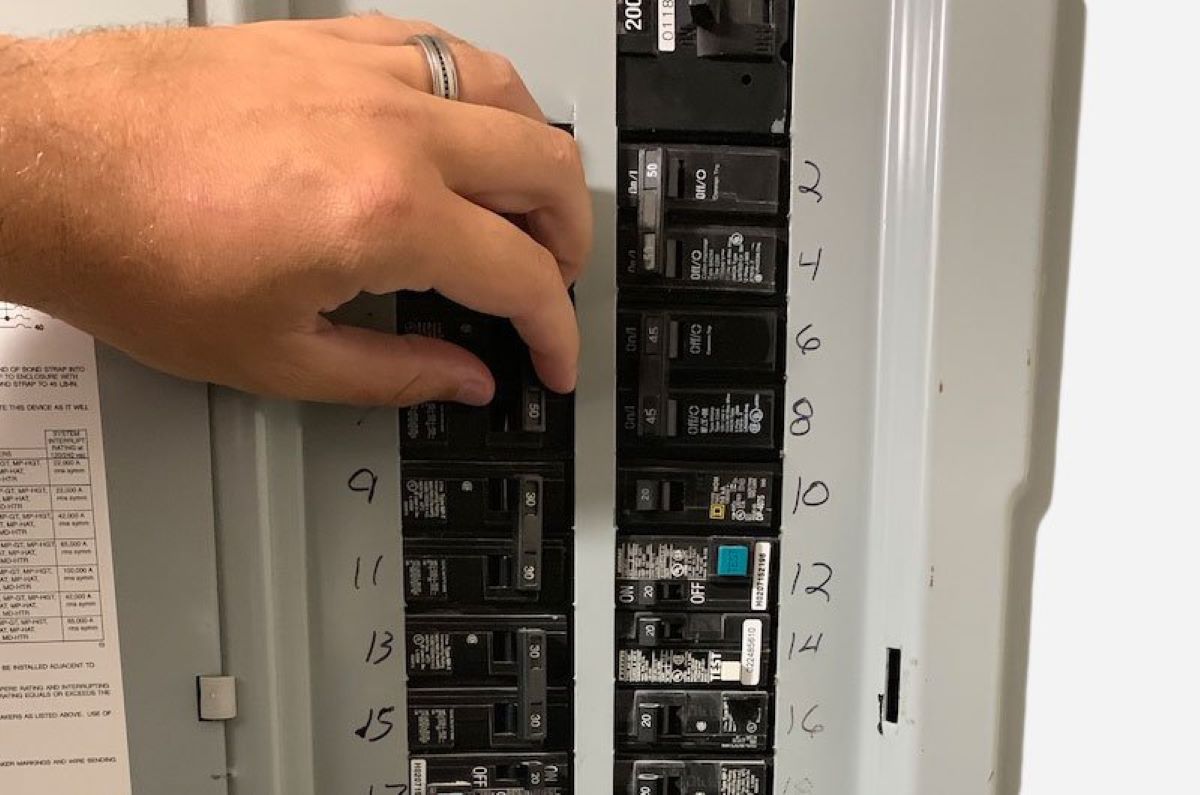
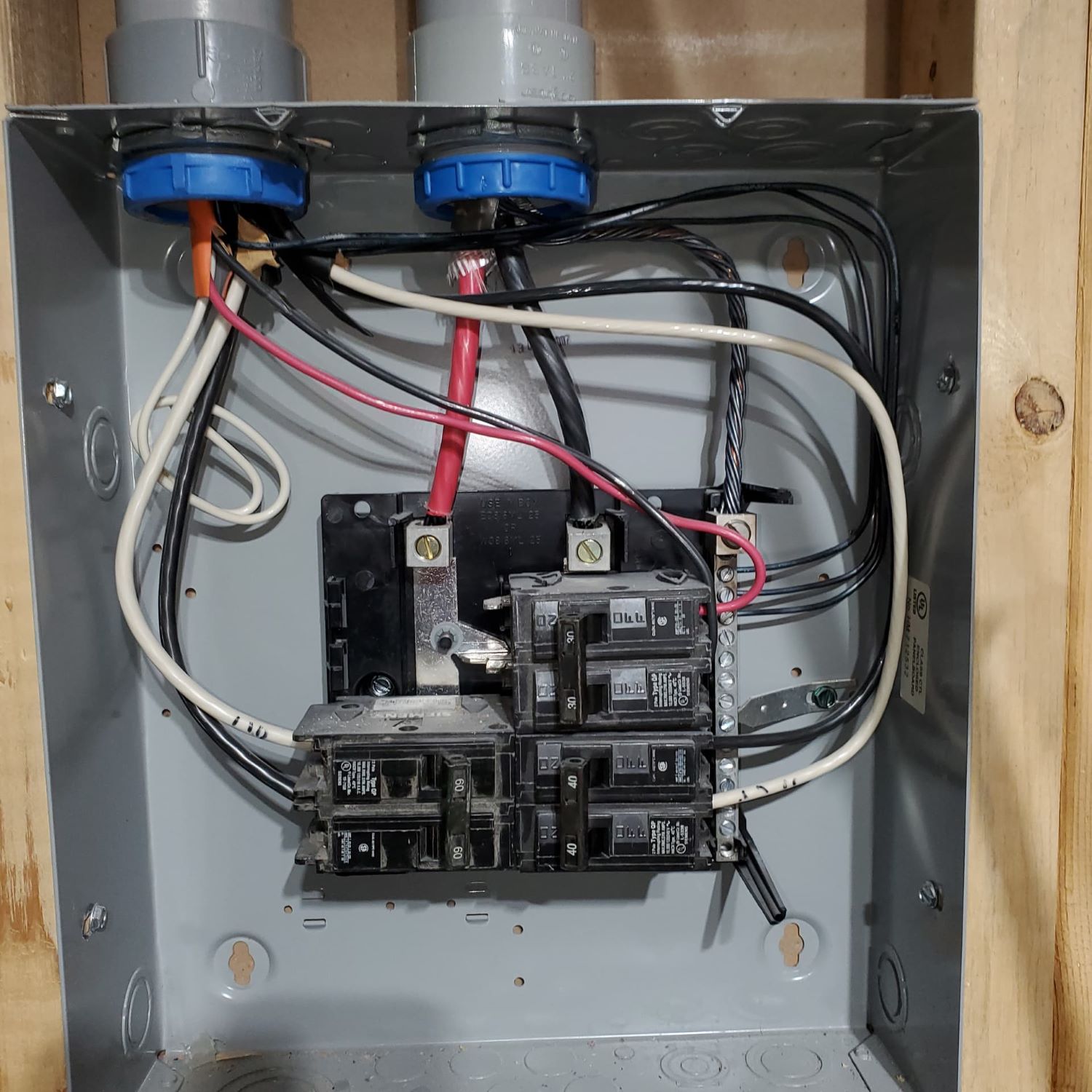
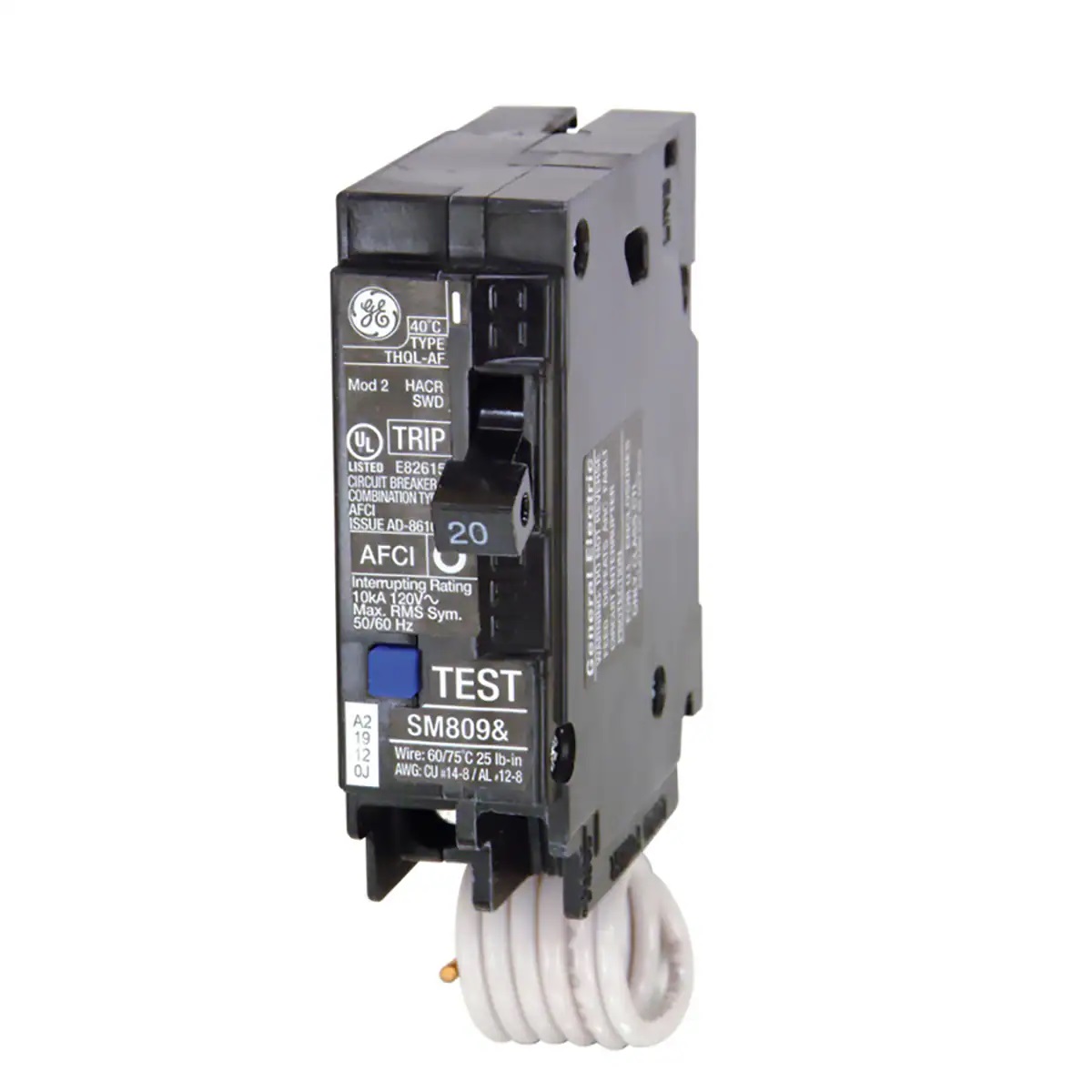
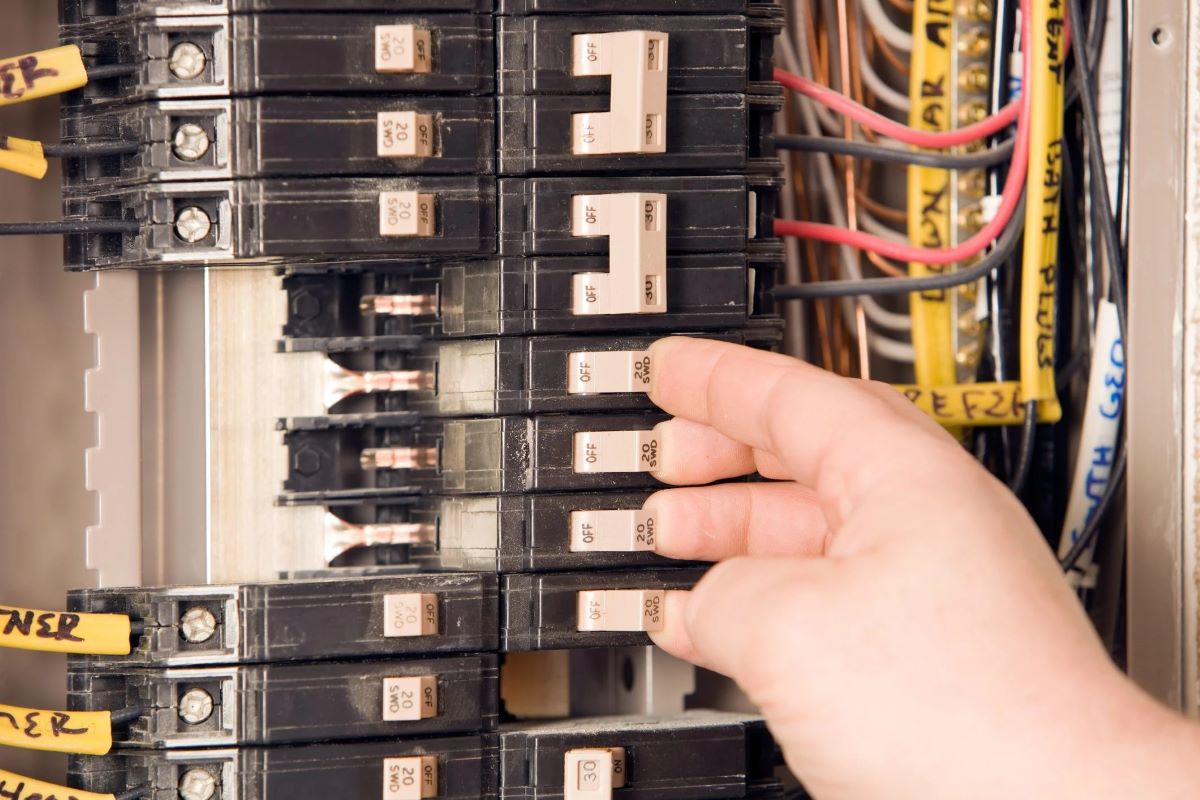
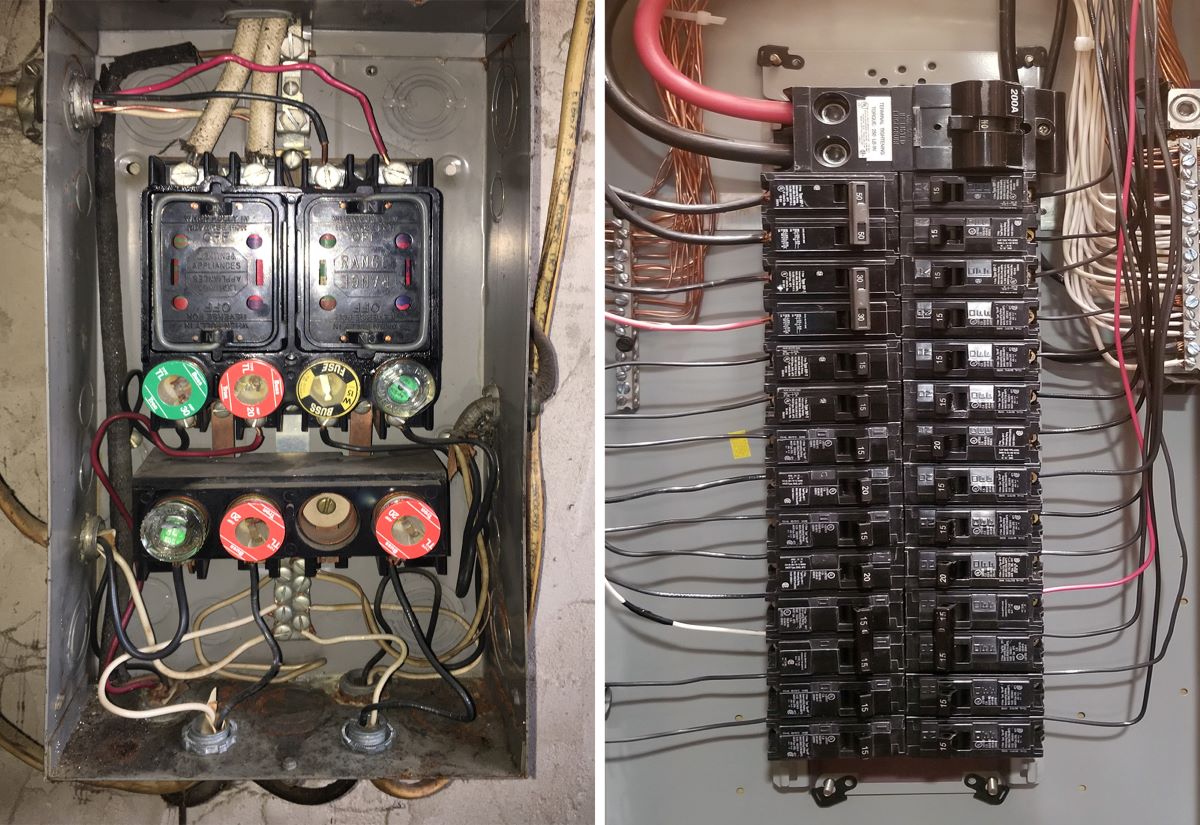
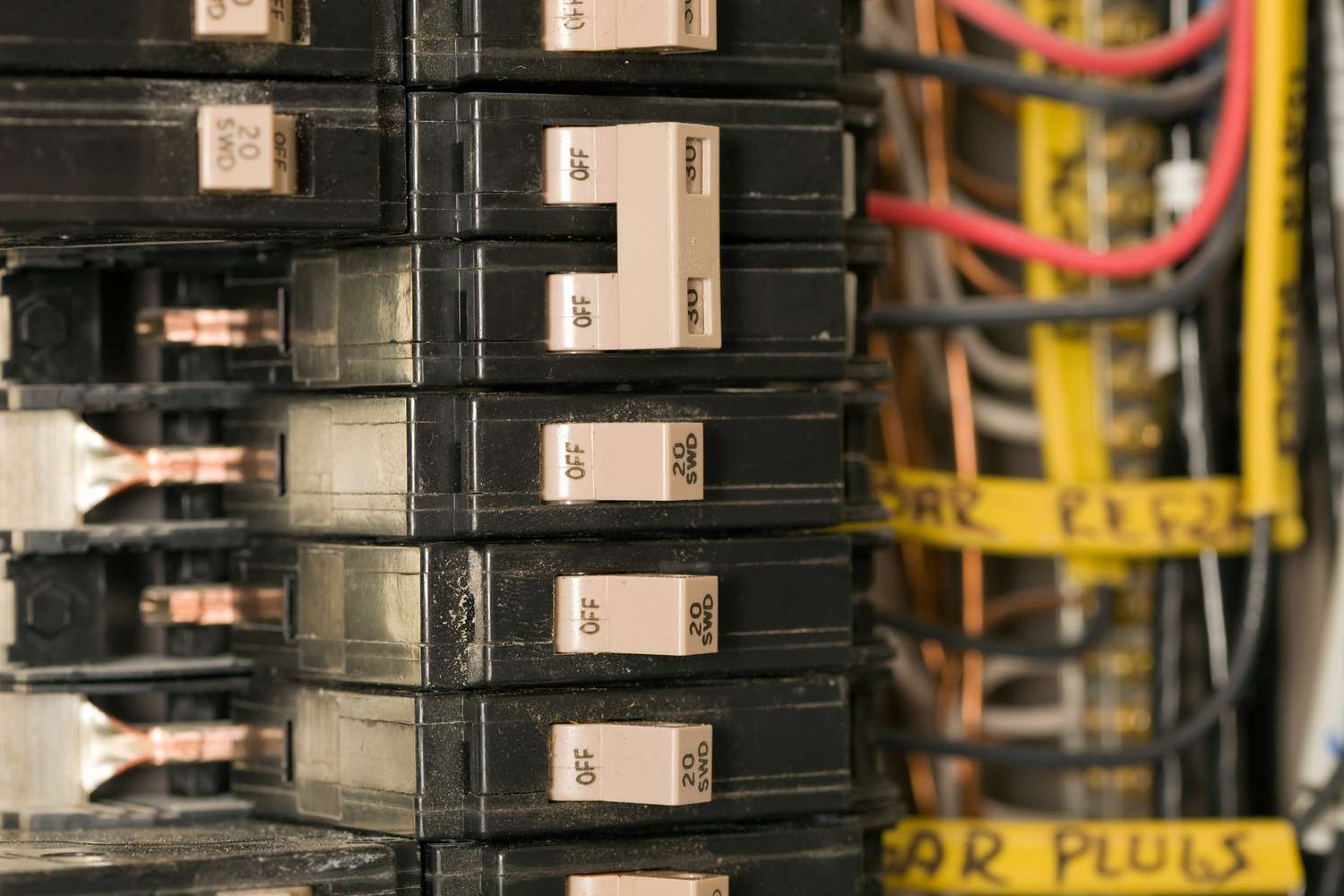
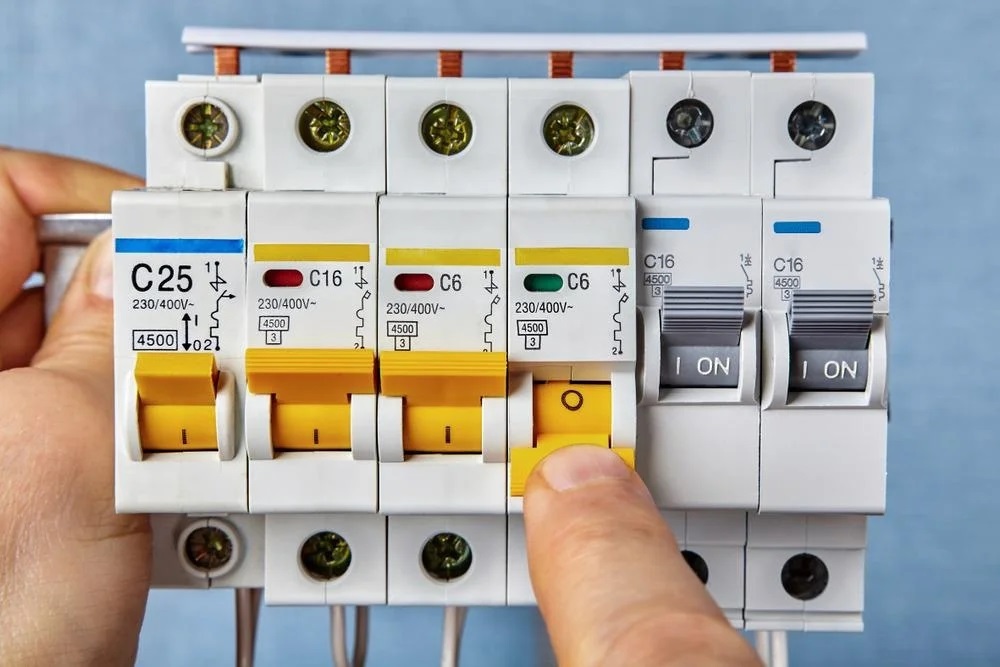
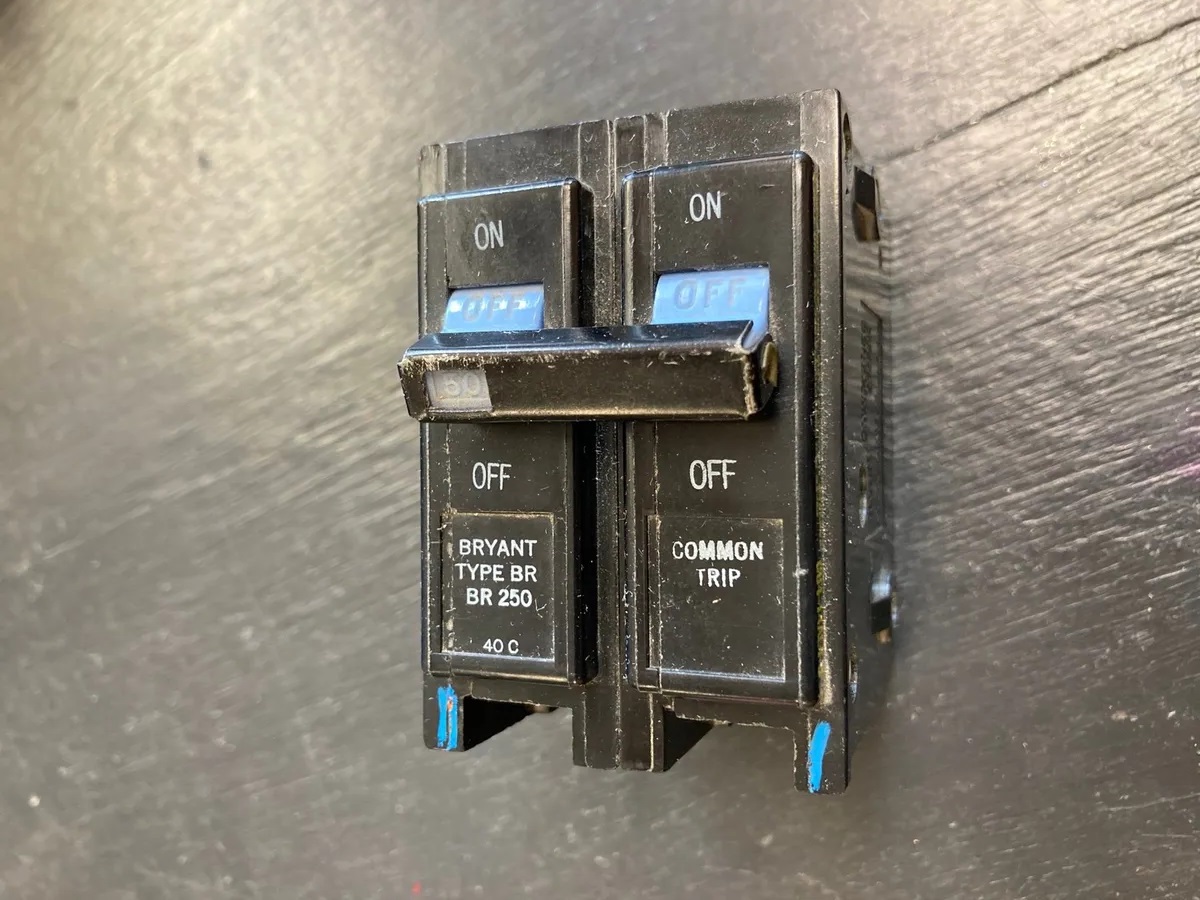
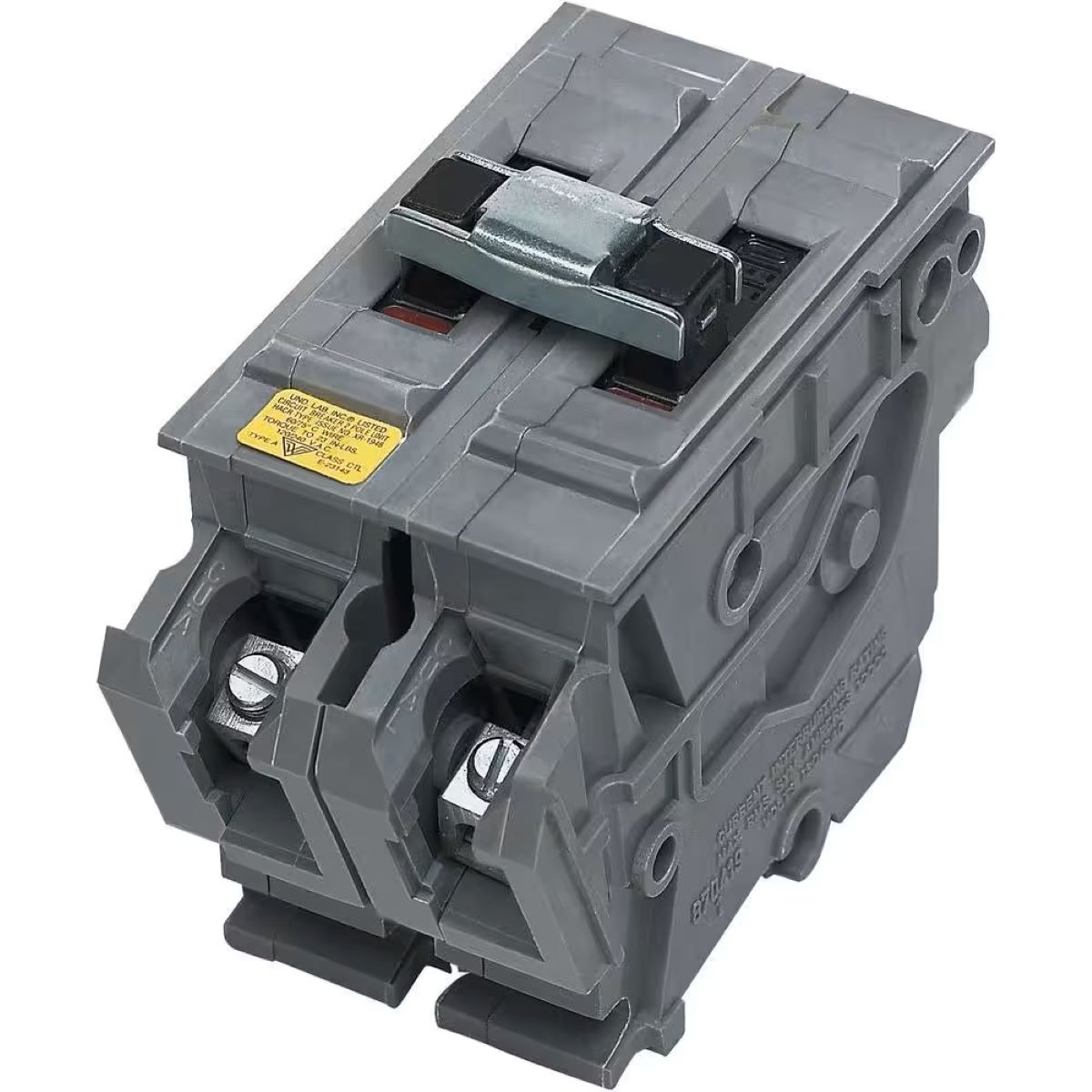
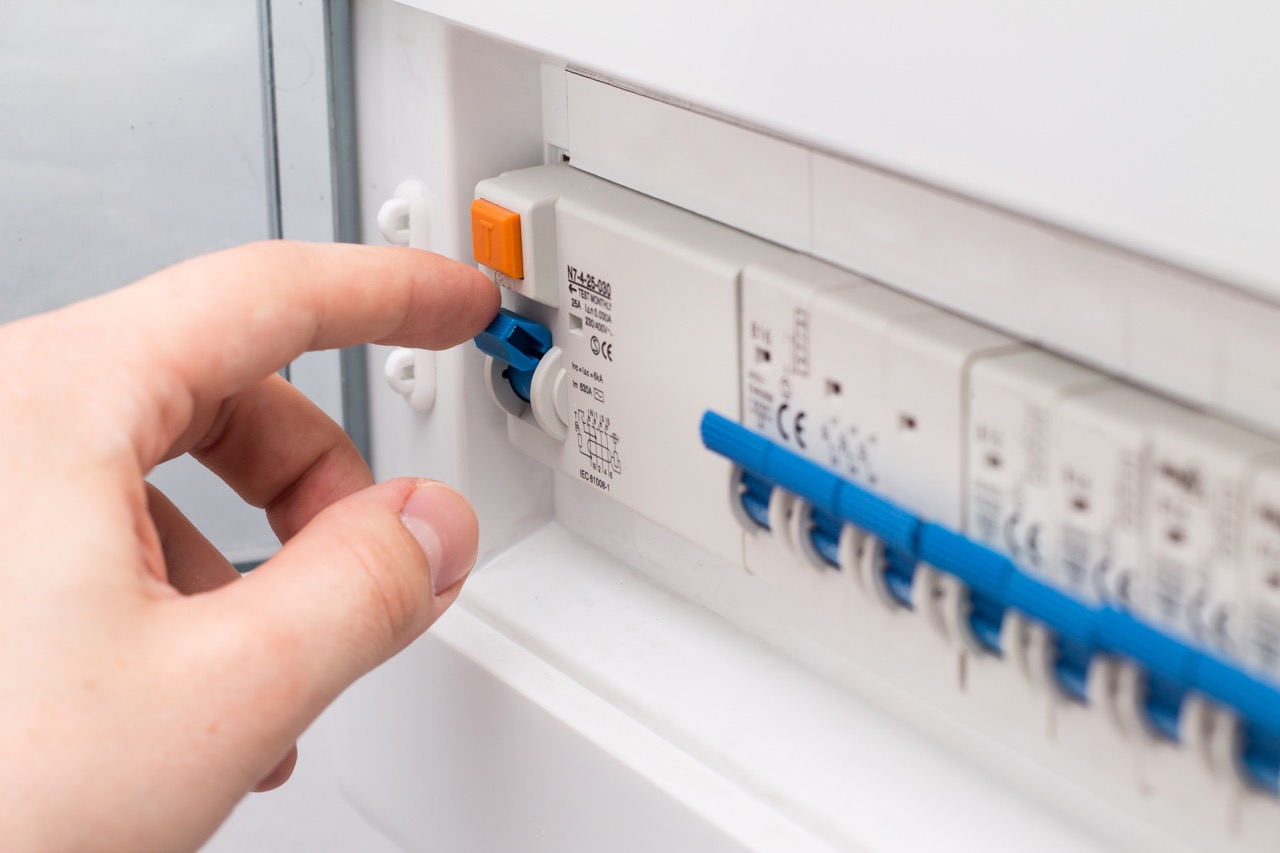
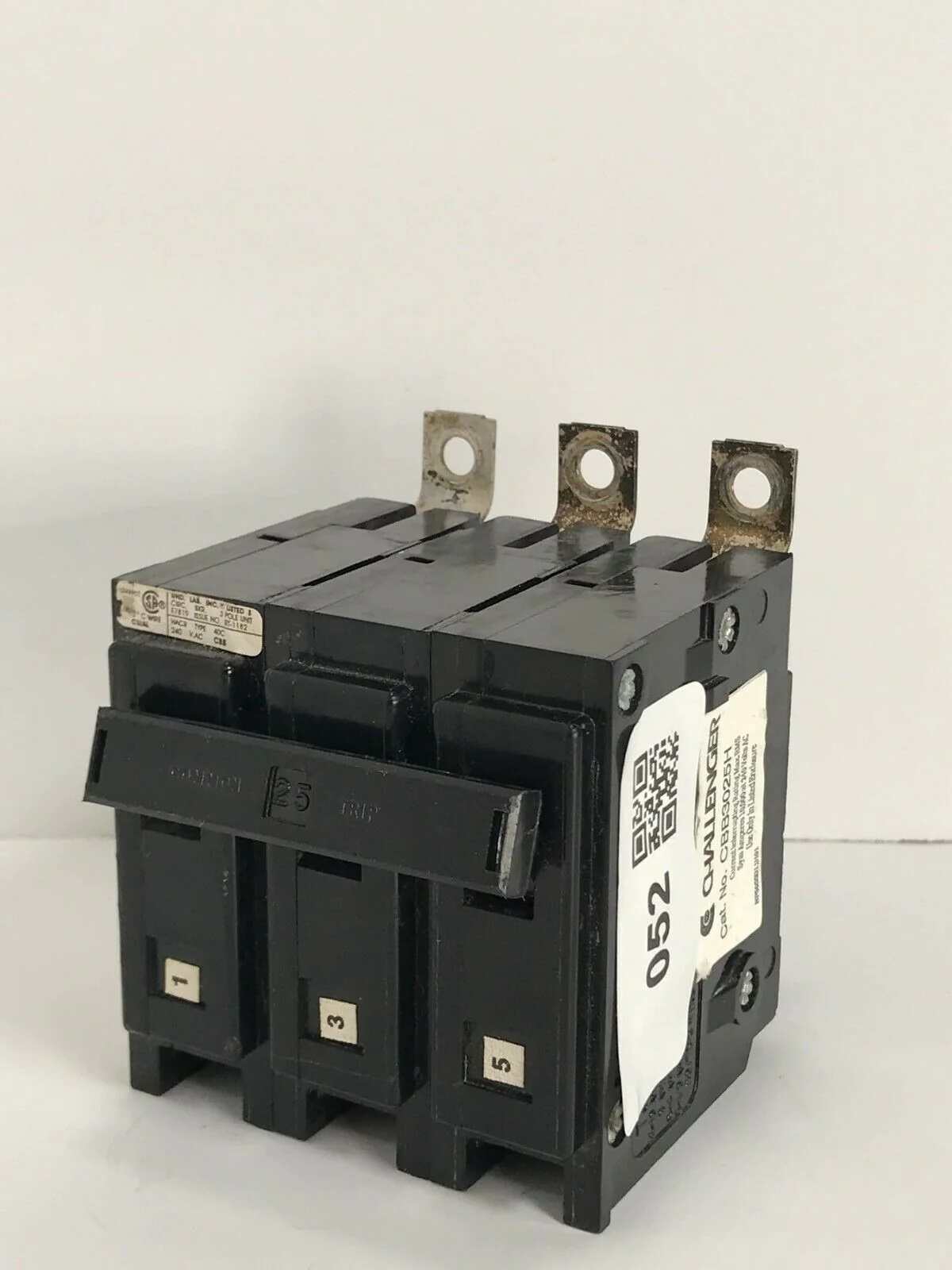
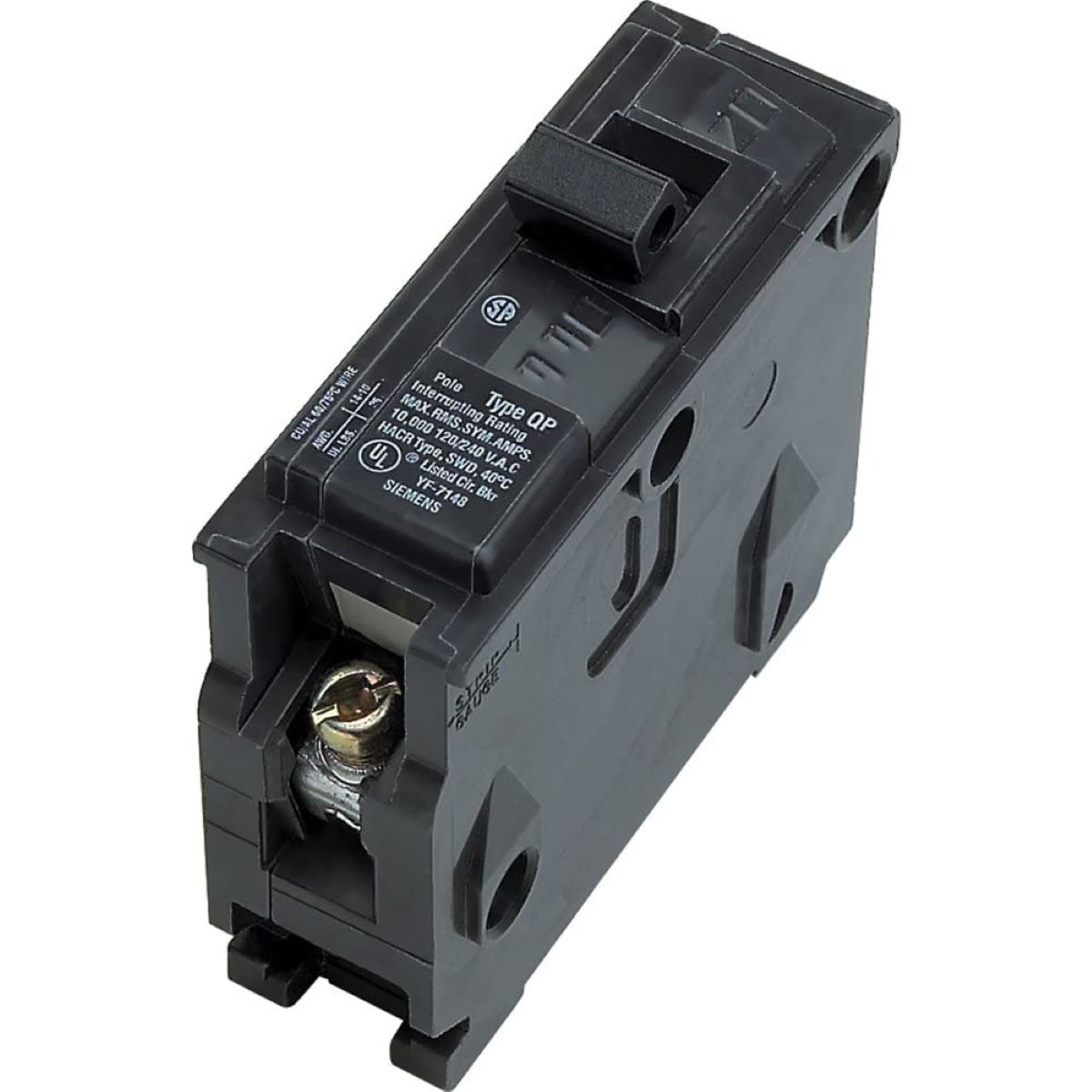

0 thoughts on “What Do Tripped Circuit Breakers And Blown Fuses Indicate”